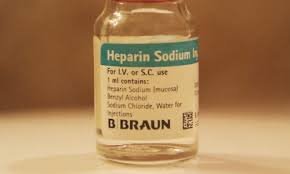case study of the Heparin Contamination (2008): Over sulfated chondroitin sulfate contamination caused deaths

📌 Case Study: Heparin Contamination (2008)
Background
-
Heparin is a widely used anticoagulant, often derived from porcine intestinal mucosa.
-
In 2007–2008, reports of severe adverse reactions and deaths were linked to contaminated heparin products, especially in the United States.
The Issue
-
Investigations by the USFDA revealed that oversulfated chondroitin sulfate (OSCS), a cheap counterfeit additive, was intentionally introduced into the heparin supply chain.
-
The contaminant was not a natural byproduct but a chemically modified compound designed to mimic heparin in standard quality control tests.
-
Contaminated heparin triggered severe allergic-type reactions, including hypotension, nausea, breathing difficulties, and deaths.
Impact
-
81 deaths in the United States and hundreds of adverse reactions worldwide were linked to contaminated batches.
-
The incident exposed global supply chain vulnerabilities in sourcing APIs (active pharmaceutical ingredients), particularly from China.
-
It highlighted limitations in traditional compendial testing methods (USP/EP), which failed to detect OSCS.
Regulatory & Industry Response
-
USFDA and European regulators mandated enhanced testing of heparin for contaminants.
-
Strengthened requirements for supplier qualification, supply chain traceability, and vendor audits.
-
Development of new analytical methods (NMR, capillary electrophoresis) to detect OSCS and other impurities.
-
Reinforcement of ICH Q7 (GMP for APIs) and global regulatory oversight.
Key Lessons Learned
-
Global supply chain oversight is critical – outsourcing increases risk if controls are weak.
-
Pharmacopoeial tests must evolve with new threats to detect intentional adulteration.
-
Data integrity and supplier transparency are essential to safeguard patient safety.
-
Regulatory bodies must adopt risk-based inspections globally.
-
Pharma companies share responsibility for vendor auditing, not just relying on certifications.
✅ Conclusion
The 2008 heparin crisis reshaped pharmaceutical supply chain regulation and pushed for more robust analytical technologies to prevent economically motivated adulteration (EMA). It remains a benchmark case in drug safety, quality assurance, and GMP compliance.

